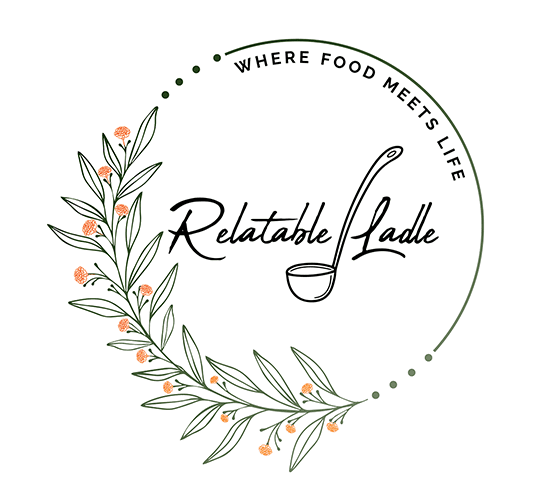We’ve covered mother enmeshment, specifically with the son, as well as father-daughter enmeshment. You might not be surprised that this dynamic can also result in an enmeshed family.
When Adam and I started dating, I knew something was amiss in his interactions with his family and how they received me. I was new, and it was clear that I did not act like them.
I could identify an issue because I had seen the same dynamics in my own family. I experienced abuse my whole life, and I would not submit to toxic dynamics again.
The enmeshment among all family members that I witnessed in both scenarios can best be described as a hive mindset.
All personal decisions and autonomy were centered around pacifying an individual (in our case, our mothers).
This enablement further encouraged those enmeshed individuals to pursue the same self-centered tactics. Read on to learn how this impacts other family members, or check out our video to learn even more about sibling enmeshment.
Enmeshment In Families
Enmeshment overshadows healthy emotional ties, leading to an environment where autonomy is a distant concept that is discouraged. Enmeshed family members become caught in a cycle of emotional dependency, where the distinction between individual identity and collective identity is almost nonexistent.
In such families, setting boundaries is nearly unheard of. Such an environment is optimal for codependency and a loss of personal autonomy or growth. Members struggle to recognize where their emotions end, and others begin, obstructing the development of healthy relationships.
How to Recognize Enmeshment
In enmeshed family and sibling dynamics, the actions of individuals extend beyond supportive care into overwhelming closeness. For example, family expectations might dictate an individual’s life decisions.
This emotional dependency erodes any chance of personal autonomy.
Moreover, relationship patterns where another’s mood profoundly influences one’s feelings are unhealthy and a clear sign of compromised emotional boundaries.
This scenario typically arises in enmeshed siblings, where one cannot feel at ease unless the other is content. In healthy relationships, personal independence is valued and respected alongside familial bonds.
The Impact of Enmeshment on Individual Autonomy
Family members heavily entrenched in emotional dependency will experience a loss of self and their uniqueness subsumed by the collective identity.
Siblings and family members struggle to distinguish their desires, dreams, and decisions from those creating enmeshed dynamics.
For example, we were expected to spend almost every weekend with the family or attend every family event (and there were many). Still, that was not enough. I preferred to be independent, so I would draw the line at different times to save time for Adam and me or for my own life.
Unfortunately, my lack of conformity threatened his mother, and I was presented as a threat to the dysfunctional cohesion of other family members. No amount of kindness could sway them from their unquestioning loyalty.
Despite logic or natural progression of independence in our relationship outside of the family ties, all members were stressed and upset if the enmeshed individuals (mothers) were upset or angry.
Each move made by the family was taken to quell the emotional dysfunction that might ensue from our mothers. Rather than evaluate the mothers’ actions, the siblings and relatives found fault with what we did.
Setting Boundaries within the Family
Freedom from these stifling patterns requires deliberately establishing emotional boundaries through assertive communication. Old habits cling stubbornly, and family expectations can weigh heavily on one’s shoulders. However, hold on to that vision of a life filled with personal choices and liberated from the shadows of overarching family cohesion.
Assertive communication marks a departure from codependency towards fostering family cohesion that respects each person’s space. To do this, clearly state limits, anticipate family expectations, and gently but firmly correct any overstepping.
You will initially meet resistance; however, persistence is vital. If you make exceptions to your limits, you will teach those around you that it’s okay to disregard your boundaries.
While it can be challenging, remind yourself that you are overcoming enmeshment, and that’s why you are expressing your needs. It may be helpful to understand the resistance as well.

Understanding Family Resistance
Resistance from family members typically stems from deep-seated fears of losing emotional dependency and breaking the established dynamics.
Family members might view actions towards autonomy in relationships as threatening family cohesion. Similarly, siblings may perceive attempts at establishing emotional boundaries as a rejection of them.
Emphasize that this isn’t about severance but about fostering individual identity.
Engaging in relationship therapy can offer a structured approach to discussing these issues.
Overcoming enmeshment and codependency requires patience, as change will only occur after some time. Family members may need time to adjust to new dynamics.
Key Takeaways to Break Enmeshed Patterns
- Recognize the Patterns: By identifying enmeshment, you can begin to reflect on how they impact your identity.
- Seek Professional Help: Relationship therapy can guide establishing boundaries and breaking old habits. This form of professional advice encourages open communication and articulation of needs. It can foster an atmosphere where assertive communication becomes the norm rather than the exception.
- Communicate Assertively: Learning these skills will be critical with family and siblings without alienating them (if you want to maintain relationships).
- Establish Boundaries: Delineate what is acceptable and what isn’t. Your message can convey that while you value being a family, you still require space for personal independence.
- Be Prepared for Resistance: Not everyone will understand what you are trying to do. When you grow up in this environment, it’s hard to receive the news that what you’ve been experiencing is unhealthy or that anything is wrong. Family members might perceive your actions as a threat to family dynamics.
- Stay Consistent: Consistency in reinforcing boundaries and asserting your needs will slowly reshape the enmeshed patterns into healthier sibling relationships.
While the process will not transform overnight, the persistence in overcoming enmeshment leads to enriched, balanced relationships grounded in respect for autonomy and individual identity.
Do you have an Enmeshed Family?
Please drop us a comment below! For more information on mother enmeshment, we delve into this dynamic here. If you want to learn more about how enmeshed mothers can impact their sons or fathers with daughters, you can find that article here and here. Finally, if you’re wondering whether no contact makes sense with this example of parent-child relationships and family enmeshment, check out our article here.
Disclaimer: All content and information on this website including our recipes and blog articles is for informational and educational purposes only and does not constitute medical, psychological, or health advice (for that please always seek the help of a professional in these areas). We do not warrant that the information presented herein is free of any errors or omissions although we do our best to provide information backed by research.

